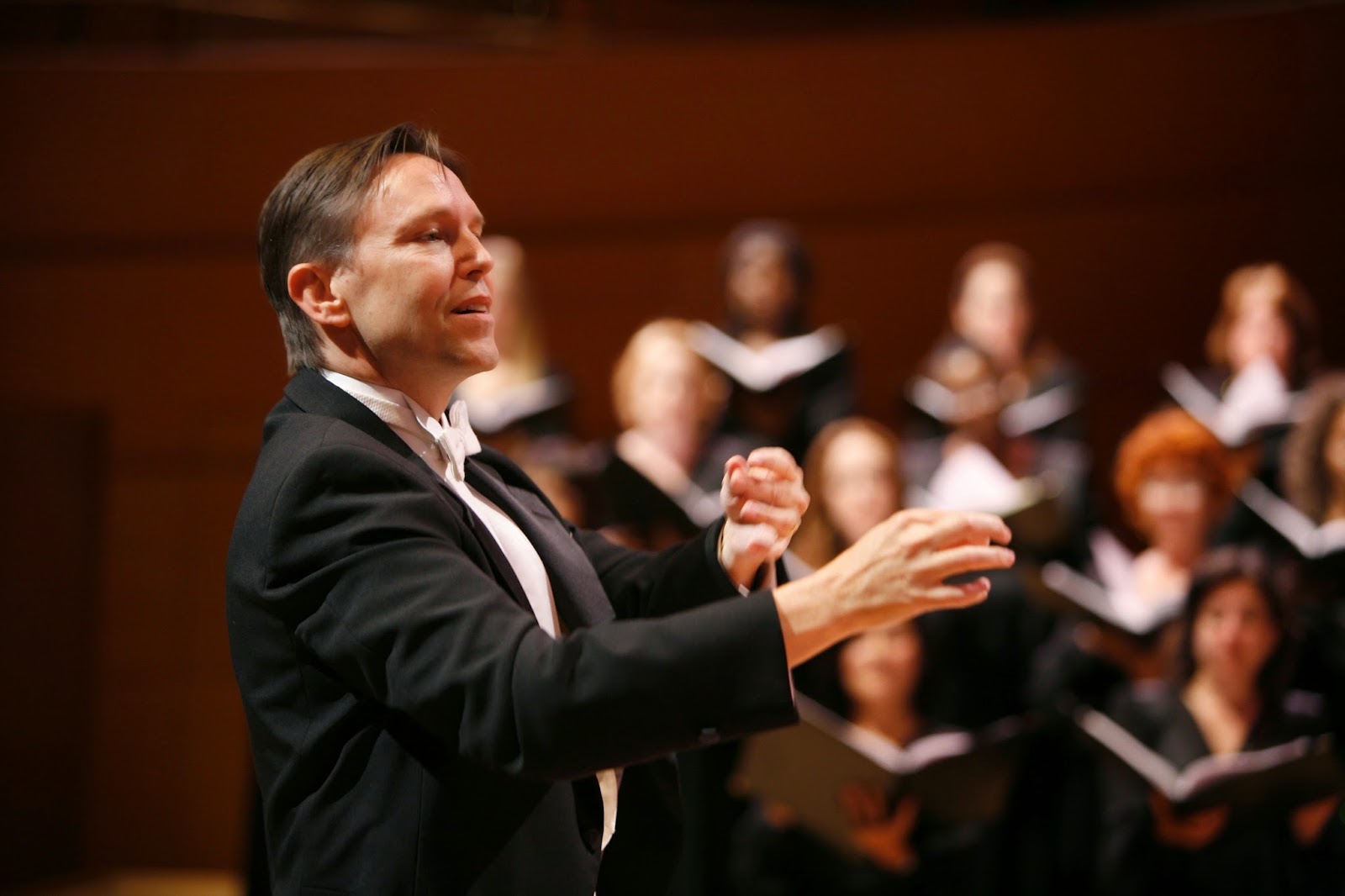 |
| Johann Sebastian Bach |
By Douglas Neslund
From the very first
measure, with its pulsing, driving 6/8 rhythm till the final sorrowful chorus,
Johann Sebastian Bach tells the story of Jesus’s suffering and death in every
possible shade of sadness, anger, regret, and even violence. There is no joy of
the resurrection here; that comes in another opus.
Some might claim the
Passion is not a religious work, but the Christian Bach was would think
such a notion strange, for who, without Christian conviction would dip his
compositional pen into an inkwell of the darker emotions of such?
Who would conceive of telling the dark tale within an architecturally
perfect three-plus hour masterwork, unless the motivation for doing so springs
from a deep faith in the veracity of the story and divinity of the subject?
Maestro Grant Gershon understood
the source of J.S. Bach’s personal motivation and together with his magnificent
Los Angeles Master Chorale and guest Musica Angelica Baroque Orchestra, gave a
performance that seemed to pass quickly, although the all-too-brief
intermission was a welcome chance to avoid venal thrombosis.
 |
| Jon Lee Keenan |
The role of Evangelist, the storyteller, was assigned to Master Chorale member Jon Lee Keenan, whose tenor voice easily carried throughout Walt Disney Concert Hall and featured gorgeous high notes and clearly enunciated German. As his voice matures, Mr. Keenan will find it necessary to master intervals in order to tighten up pitches, but his solo career is on a promising trajectory. One looks forward to hearing him sing this challenging role in the future.
The St. Matthew Passion
offers many solo opportunities, all of which were awarded members of the
Chorale, an impressive show of talent in every respect. The Jesus role was
given to Chung Uk Lee, whose bass voice carried through the instrumental halo
of Musica Angelica in subdued, reflective fashion.
It’s difficult to comment
on every soloist – there were many, but two were particularly outstanding:
Steve Pence, whose extremely focused voice has suddenly blossomed from an
almost pinched to a richly musical sound, wealthy in overtonal beauty. Like Mr.
Pence, second-year Chorale member Arnold Livingston Geis sang from behind the
orchestra, but had sufficient gravitas
to overcome with his beautiful tenor.
The architecture of the
Passion requires not only a superior musician-conductor, but a nimble one. To
his or her left sits Orchestra and Chorus 1, to the right sits Orchestra and
Chorus 2, and perched above these multitudes, at least until intermission, sits
a children’s chorus, which bookend the first half of the Passion with cantus firmus haloes. In this performance,
the 20 young women and four boys of the Los Angeles Children’s Chorus provided undernourished
chorale melodies, with the incredibly important words that give context to the
churning choruses below virtually undetectable.
If parts of the
after-intermission portion of the Passion sounded occasionally unfamiliar, they
were. An heretofore unrecognized member of the Bach dynasty, John Eliot Gardiner, whose
recent book on the subject of the Passion was virtually reviewed by the always-excellent
and informative Master Chorale program annotator, Thomas May, might have provided
a clue. Unfortunately, one must assume the origin of the less familiar music stems
from the fact that Bach himself reworked and revised the work subsequent to its
initial performance.
The Passion, told within
the framework of the emotionally-charged late Baroque style, dares performers
to dramatize to a greater or lesser degree. On this occasion, the Master
Chorale popped out of their seats whack-a-mole like on a couple of occasions.
The speed with which this maneuver was performed had a tendency to evaporate,
at least momentarily, any feeling of meditative religiosity the audience might
have felt. It was, as they say, over-the-top. The Master Chorale mustered its loudest
sound ever in sing-shouting “Barabas” in unison when Pilot asked the mob
whether, as a gesture of generosity, he should release Jesus or the common
criminal from arrest. The effect on the audience was not unlike the “surprise”
of Josef Haydn’s famous symphony.
 |
| Grant Gershon |
The true star performance
of the evening was Grant Gershon’s. He had few moments of repose, as the
unfolding story ricochets from passive to active, from left to right and back,
and just maintaining a balance between orchestra and choral participation requires a musician of
the first rank, as well as managing to avoid potential disaster with a soloist’s erroneous
entry.
 |
| Musica Angelica Baroque Orchestra |
Musica Angelica has
evolved under the direction of Martin Haselböck from its earlier sometimes
lightweight performances leaning toward the delicate, to a more vigorous,
sometimes attacking style more in keeping with similar European early music
performers.
Chorale-orchestral balances were much improved on this occasion
than in the past when the orchestra was often overcome by the chorus.
Concertmaster Julia Wedman of Orchestra 1 and Concertmaster Robert Diggins of
Orchestra 2 each had challenging obbligato
duties performed stylistically and musically. Flutists Stephen Schultz and
Mindy Rosenfeld, and oboists Priscilla Herreid and Lot Demeyer were featured
accompanying various vocal soloists, were perfection.
A very different St. Matthew
Passion arrives in April, in the Water Passion of Chinese composer Tan Dun, in a
reprise to the exceptional performances of the 2005 season.













No comments:
Post a Comment